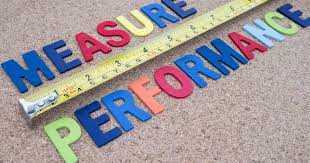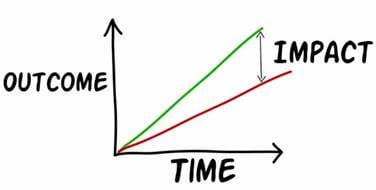Key Performance Indicators (KPIs) is a word that has been and is still being used in every field. We can say that this is the one thing all businesses have in common. We all love success, and how can we best tell we are making progress towards achieving our goals? This is where Key Performance Indicators come in. They are essential metrics that help you track your progress and make data-driven decisions about achieving your goals.
Choosing the right KPIs helps you gain valuable insights into the effectiveness of your program and identify areas for improvement. So, how do you choose the right KPIs? There are so many KPIs that are relevant for startup accelerators and incubators but the right ones are those dependent on your business’s nature and goals.

What are the goals of your program? What needs are the startups seeking to be met in this program? What available resources do you have for tracking and analyzing data? These are some of the questions you can reflect on when picking the KPIs to track.
Let’s now examine some of the KPIs that will ensure your program is on track to achieve its goals and provide maximum value to your startups. These KPIs offer a holistic view of your startup accelerator or incubator program.
Core KPIs for Accelerators or Incubators
When we talk about the core KPIs, we basically mean those KPIs that can apply to every startup accelerator or incubator program. They include;
Startup Success Rates
One of the most important KPIs for startup accelerator or incubator programs is the success rate of the startups participating in the program. Success can be measured in different ways, including the number of startups that have raised funding, the number of startups that have achieved profitability, and the number of startups that have achieved an exit (such as an acquisition or IPO).
Whoever said, “Your success is my success”, was absolutely right! The success of your startups is a reflection of your success. By evaluating the goals these startups aimed to achieve, you can determine whether the program was successful. Tracking these metrics over time will help you understand the effectiveness of your program in supporting startups.
Investment Attraction Metrics
Another important set of KPIs for accelerator or incubator programs are metrics that measure the program’s ability to attract investment. These metrics could be: What’s the total amount of investment raised by startups in the program? How many investors have participated in the program? Here, we are not talking about those who showed up in the program but those who showed interest in startups.
These metrics can help you understand the program’s impact on the investment sector and the ability of startups to secure funding.
We can also look at the number of follow-on investments that have been made in startups that have completed the program. The majority of the startups join these programs for funding if not exposure, and if you could get investors to invest in them, what more could we say if not “The program was a total success!”

Program Engagement Levels
Finally, on the core metrics, it is imperative to track metrics that measure the engagement levels of the startups and mentors in the program. Here, you’ll look into participation and commitment.
Some metrics you can use to measure engagement levels include the number of mentorship hours provided to startups, the number of networking events held, and the number of workshops or training sessions delivered. Tracking these metrics can help you understand the level of engagement and satisfaction of the startups and mentors in the program.
Operational Metrics
Operational metrics tell you how effective your strategies are and takes the company’s overall performance into perspective.
As an accelerator or incubator, you must track certain operational metrics to ensure your program is effective. These metrics can help you identify areas that need improvement and make data-driven decisions to optimize your program. The first metric under operational metric is;

- Resource Utilization
Resource Utilization measures how effectively you use your resources to support your startups. How many of the resources available are you currently using? This metric can help you identify which resources are in high demand and which ones are underutilized.
Monitoring this KPI can help you optimize your resource allocation, ensuring your startups can access the resources they need to succeed.
You can track Resource Utilization for each resource you offer, such as office space, equipment, or mentorship hours. Doing so lets you determine which resources are in high demand and adjust your offerings accordingly.
- Mentorship Network Strength
Mentorship Network Strength measures the quality and effectiveness of your mentorship program. This metric can help you identify which mentors are most effective and which ones need additional support. This metric is important because it can help you ensure that your startups are receiving high-quality mentorship that helps them achieve their goals.

To track Mentorship Network Strength, you can use a few different metrics:
- Number of mentorship hours per startup
- Number of mentorship sessions per startup
- Quality of mentorship feedback (e.g., ratings from startups)
This KPI can also help you identify which startups are receiving the most mentorship and modify your program accordingly.
- Operational Efficiency
Operational Efficiency measures how efficiently you are running your accelerator or incubator program.
The primary reason for tracking this metric is to identify areas where you can streamline your processes and reduce costs. For success, you need to enhance your program to ensure that it is running as efficiently as possible.
To track Operational Efficiency, you can use a few different metrics:
- Time to onboard startups
- Time to graduate startups
- Cost per startup
For example, if you find that your time to onboard startups is too long, you can identify bottlenecks in your process and make adjustments to speed up the onboarding process.
Impact and Outcome Measurement

Assessing the impact and outcomes of your accelerator or incubator program is vital for proving its success to stakeholders and attracting potential investors. Key performance indicators (KPIs) provide a clear way to measure this success. In this section, we will focus on three critical KPIs for measuring impact and outcome: startups’ long-term viability, economic contributions, and innovation outputs.
Long-Term Startup Viability
Economic Contributions
When we talk about the economic contribution, we mainly refer to the tangible financial effects of the startups that have successfully completed your program. This prompts questions such as: How many jobs have these startups generated? What is the revenue generated by these startups? What amount of taxes have been paid as a result of their operations?
Measuring economic contribution is an important metric of the effectiveness and relevance of your startup accelerator or incubator program. It provides valuable insights into how well the program fosters the growth and success of startups within the broader economy. Over time, this metric not only assesses the immediate outcomes of your program but also its long-term influence on job creation, revenue generation, and overall economic prosperity.
Innovation Indicators
Innovation indicators measure the impact of your program on the broader innovation ecosystem. Key metrics to consider include the number of patents filed by the startups, the number of new products or services developed by the startups, and the number of partnerships formed between the startups and other companies.
In conclusion, tracking the progress of your startup accelerator or incubator program is a crucial step towards achieving the goals you have set for your organization. Consider it akin to a navigational tool guiding you toward your destination. While you could reach your destination without it, having a map ensures a smoother and swifter journey.
You probably want to implement these KPIs but don’t know where to start. Don’t worry, Madavi is here for you! Reach out to us and we can help you identify the right KPIs to track and measure the success of your efforts. What are you waiting for?
